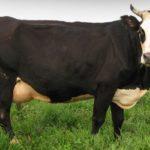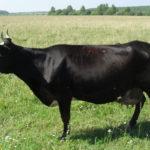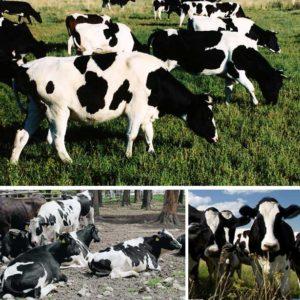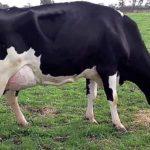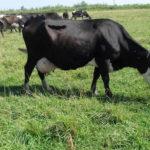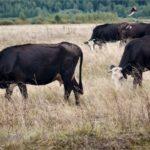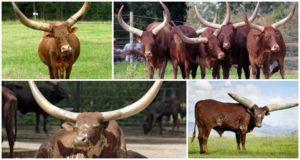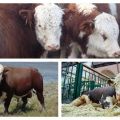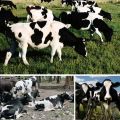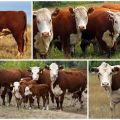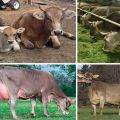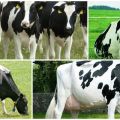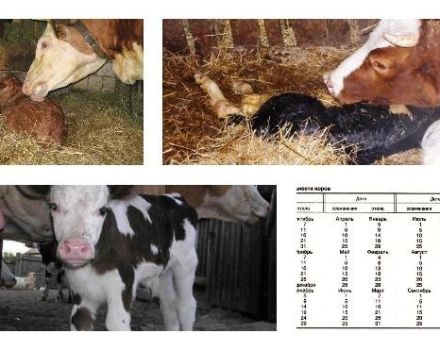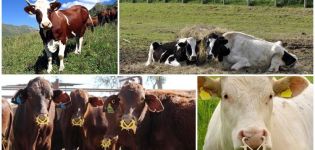Description and characteristics of cows of the Yaroslavl breed, their pros and cons
The Yaroslavl (from the Yaroslavl region) breed of cows in Soviet times was considered the standard of productivity. The animals gave about 15-20 liters per day of fatty and tasty milk. New breeds with greater productivity have now been developed. Yaroslavl cows are still appreciated for their calm nature, immunity to leukemia and high fat milk.
Origin story
The cows of the Yaroslavl breed are of the dairy type. They began to breed in Russia at the end of the 19th century. On the territory of the present Yaroslavl and surrounding regions, cows of black color with a white head and dark "glasses" around the eyes were raised. Such animals gave a lot of high fat milk. The Yaroslavl breed was formed by folk selection, that is, cows with the best performance indicators were selected.
After the revolution, breeding nurseries were created, in which scientists and livestock specialists worked to create a new species and improve the existing individuals. They took local breeds as a basis. In turn, the Yaroslavl cow descended from the northern Great Russian. There have been attempts to cross this breed with the Dutch, Holstein, Simmental, Algauz varieties. True, the animals obtained after crossing had low productivity indicators and milk of low fat content.
Animals from Europe began to crowd out the locals. Then they decided to cross the Yaroslavl cows with Holstein bulls in order to improve their productivity. This is how the Mikhailovsky type of the Yaroslavl breed turned out. The new cows produced more milk, but the fat content suffered. The Yaroslavl breed was also used in the breeding of the Kostroma and Istobensk varieties.
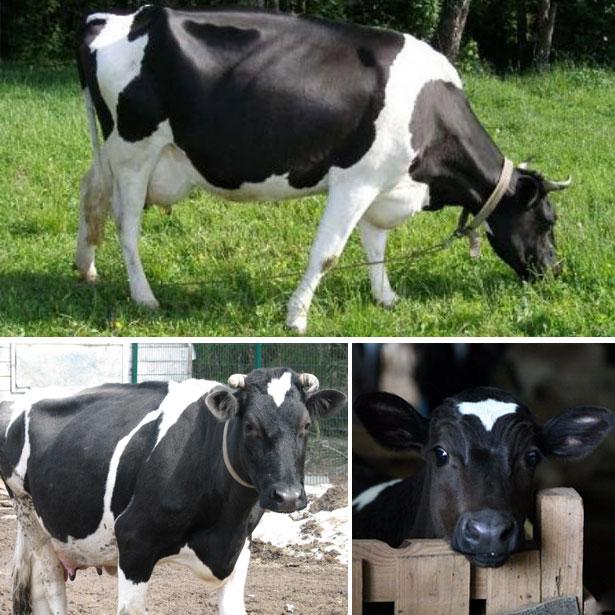
Habitat
The largest herd of Yaroslavl cows in terms of numbers is located in the Yaroslavl region. Animals of this breed are also raised in other regions of Russia. True, most of them are in places of historical breeding of the breed, as well as in Ivanovskaya, Kostroma, Tver and Vologda regions. Previously, Yaroslavl cows were raised in many Soviet collective and state farms. Now their number is 2.5 percent of the total number of cattle in Russia. Abroad, the Yaroslavl breed is used to breed new types of cows.
Description and characteristics of the Yaroslavl breed
The main distinguishing features of the Yaroslavl cows are an angular black body, a barrel-shaped body, a white head, dark glasses around the eyes, and also a light belly, udder and lower limbs. This breed has small, sharp horns. The height of the animals at the withers is about 120-125 cm, the body length is 150-155 cm. Cows weigh 350-450 kg, bulls - 500-600 kg, calves at birth - 27-32 kg. Slaughter meat yield is 55 percent. The chest of these animals is narrow and deep, the back is wide, the back is even, the legs are short.
The udder is of medium size, bowl-shaped, with cylindrical nipples, with the front nipples spaced wider than the rear ones.
Milk has a fat content of 4-4.2 percent. In some animals, this figure is 5-6%. The protein content is 3.4-3.7 percent. One adult cow produces 2.5-5 thousand kg of milk per year. Productivity depends on the age of the animal and on feeding. About 15 liters of milk is fed from one cow per day.
Pros and cons of cows
Rules for keeping and caring for the breed
The Yaroslavl breed can be grown in any climatic zone. These animals adapt well to the weather conditions of the region of their residence, almost do not get sick, in summer they eat grass, in winter - hay. True, it is better to graze the breed on flat terrain. Yaroslavl cows have a weak bone and are not adapted to walking on hilly areas.
In summer, animals can graze in the meadow all day. Milk them three times a day. During milking, the cattle are driven into the stable or barn. A special room is being built to keep animals. It is insulated, ventilation is installed, windows are inserted at the top. The room should be kept at a temperature of 15-20 degrees all year round. At lower temperature values, milk yield falls.
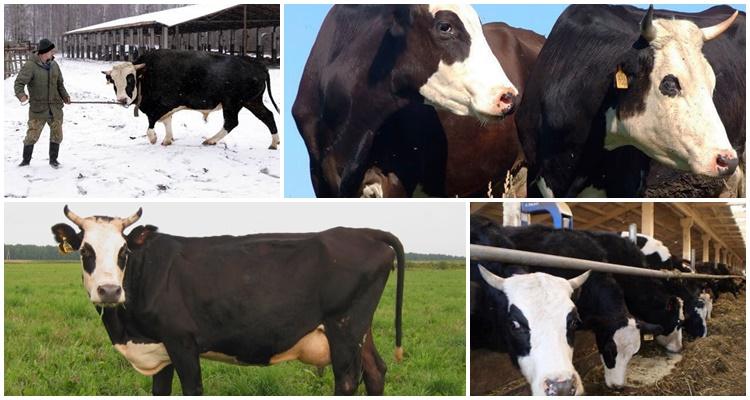
It is recommended to keep the barn clean. A mat is laid on a wooden or concrete floor. It is cleaned daily, that is, as it gets dirty, dirty straw is replaced with clean one. A manger for hay, a feeder for vegetables, a drinking bowl (bucket) for water are installed in the barn. The animals are fed when they are kept in winter stalls, 2-3 times a day. In summer, the cattle are grazed in the meadow. They are driven out to the pasture in the morning, when the dew dries up on the grass.
The nuances of feeding
The main food of the Yaroslavl breed is grass in summer and hay in winter. As an additive, animals can be given finely chopped vegetables, fruits, and even grain mixtures. True, the cattle are fed only after they have eaten grass or hay. In summer, it is advisable to graze Yaroslavl cows on a bean-cereal pasture. Vegetation recommended for nutrition: clover, alfalfa, oatmeal, timothy, vetch. Grass up to 15 cm high is most beneficial. Taller vegetation should be cut and dried in the sun.
Yaroslavl cows can be fed with fodder beets, carrots, turnips. Animals recover well on grain mixtures (barley, oats, corn). True, feeding should be no more than 1/3 of the animal's diet. The main feed is high quality grass and hay. In winter, animals can be fed with straw, silage, pharmacy vitamins and minerals. There should be salt in the feeder daily (150 grams per day per individual). Animals are watered 2-3 times a day. Milk depends on the amount of water. A Yaroslavl cow drinks 30-50 liters of liquid a day. You need to water it after grazing.
How to breed Yaroslavl cows
You can buy cows of the Yaroslavl breed in any region.These animals are not uncommon, however, breeding farms are located mainly in the Yaroslavl region. A female costs 500-800 dollars. A young calf can be purchased for $ 200. The animal lives for 18-20 years. The period of productive use is the first 10 years of life.
Females are ready to mate at 15-18 months. For insemination, it is advisable to use a bull of the Yaroslavl breed, so you get a purebred calf. Pregnancy, or pregnancy, lasts 9 months. They try to mate in late spring or early summer so that the calves are born next spring. A few months before giving birth, females are launched. Cows are milked less often and are transferred to dead wood.
For the last two months before giving birth, animals are not milked at all. A cow can give birth to a calf on her own, but the presence of a person during this process is desirable.
The approaching birth can be recognized by the enlarged genitals, the swollen udder, from which colostrum is dripping. Before the onset of labor, the female usually lies on her left side. First, the fetal bladder comes out. If it does not break, it needs to be cut. Then, as a rule, the calf comes out feet first. The newborn baby is cleared of mucus from the nostrils. The umbilical cord is cut with sterile scissors, treated with iodine and bandaged. It is advisable to let the cow lick the newborn calf. The afterbirth that comes out must be removed from the barn so that the animal does not eat it.
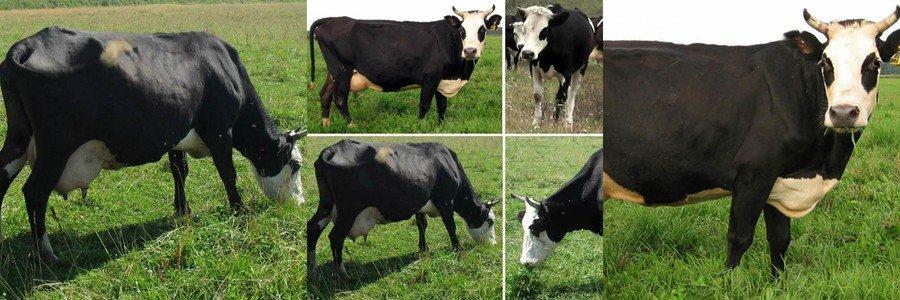
For the first 30 minutes after birth, calves should be fed colostrum. Newborn cubs should be fed 4-5 times a day. Then the number of feedings is reduced to 3 times a day. Gradually teach the cubs to drink from a bucket. The milk is diluted with water. The young are removed from the mother and the cow is milked as usual. Calves are watered with milk until 4 months of age.
Diseases and their treatment
If cows are kept clean and warm, they will not get sick. Problems arise if the animals are given poor-quality food, they are kept on a wet, dirty bed. Inaccuracies in nutrition and maintenance lead to digestive problems and udder mastitis.
The main danger to animals is represented by viral and infectious diseases. To prevent them, calves at two weeks of age are vaccinated against rhinotracheitis, parainfluenza-3, pasteurellosis. At 1 month, they are vaccinated against salmonellosis. At the age of 3 months, they are vaccinated against foot and mouth disease, anthrax. At six months, calves are vaccinated against rabies. You can find out the vaccination schedule at the veterinary clinic at your place of residence.

